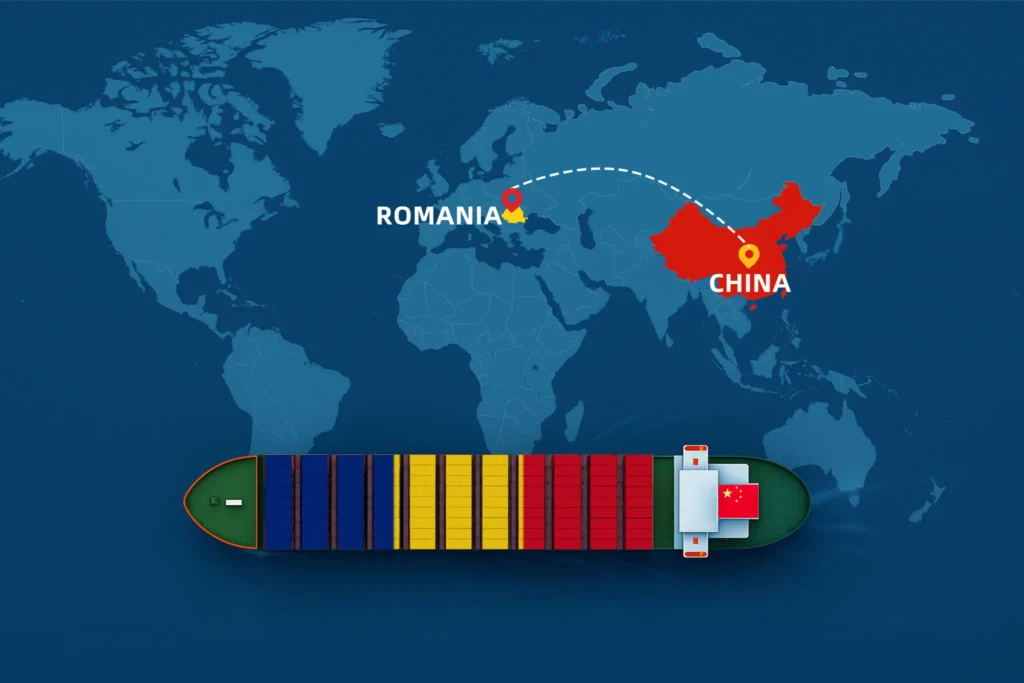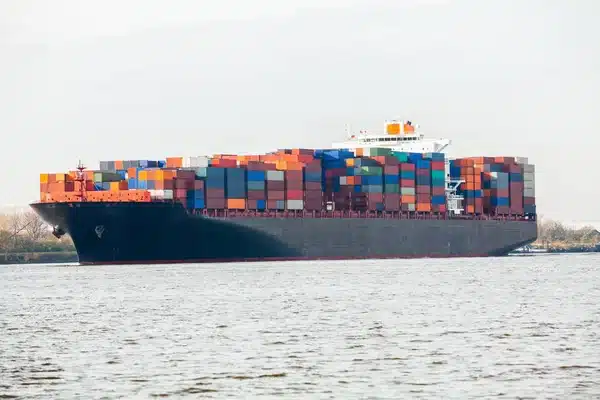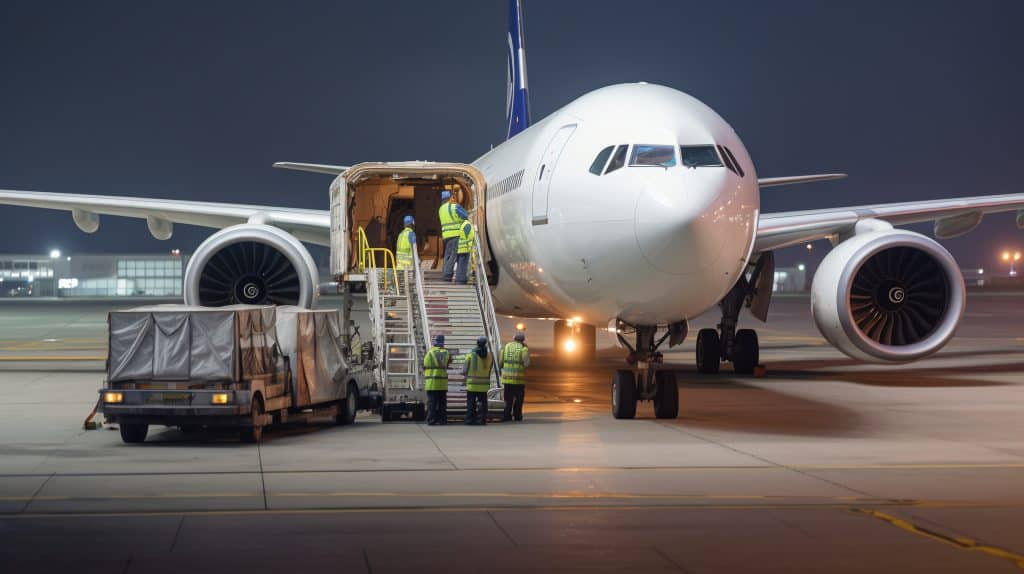ROMANIA
ONE-STOP GLOBALLOGISTICS PROVIDER
SHIPPING FROM CHINA TO ROMANIA
The trade relationship between China and Romania continues to strengthen, driven by strategic logistics channels that play a pivotal role in economic cooperation. As a gateway to Central and Eastern Europe, Romania is a crucial partner in China’s expanding trade network.
In 2023, trade between China and Romania reached significant levels, with the bilateral trade volume amounting to approximately US$9.65 billion, according to Chinese statistics. China’s exports to Romania, valued at US$7.08 billion, include a wide array of products such as electronics, machinery, automotive parts, furniture, and optical instruments. Conversely, Romania’s exports to China, totaling US$2.57 billion, focus on high-demand goods like machinery, wood products, and mineral fuels.
Romanian statistics for the same period reflect a trade volume of US$7.59 billion, underscoring the importance of China as Romania’s top trading partner outside Europe and the tenth overall. Key imports from China include electronic appliances, heavy machinery, and plastics, while Romania’s exports to China consist of essential goods like machinery, wood, and optical equipment.
In this guide, we will explore the most effective transportation routes and methods for shipping goods from China to Romania. Our goal is to provide you with actionable insights that enhance your logistics strategy and streamline trade operations. At Tonlexing Logistics, we offer competitive shipping solutions tailored to meet the needs of businesses looking to optimize their supply chains between China and Romania.

Table of Contents
Shipping from China to Romania: Comprehensive Guide for Sea Freight and Air Freight
Shipping goods from China to Romania plays a vital role in supporting trade between Asia and Eastern Europe. With Romania’s strategic position as a gateway to the European Union, businesses benefit from efficient logistics solutions to meet market demands. Whether you are shipping consumer goods, industrial equipment, electronics, or textiles, understanding the available shipping options is essential for success.
Sea freight is ideal for transporting large volumes of goods cost-effectively, making it the preferred choice for non-urgent shipments. On the other hand, air freight is the fastest and most secure option, perfect for high-value or time-sensitive items. Both methods are supported by a robust network of Chinese ports and airports connected to Romania’s major logistics hubs.
This guide provides valuable insights into the shipping process, costs, transit times, and key considerations for importing goods from China to Romania. With the right planning and logistics partner, you can ensure smooth and hassle-free operations to grow your business.
Sea Freight from China to Romania
Sea freight is the most economical and widely used shipping method for transporting goods from China to Romania. It is especially suitable for large, bulky, or non-urgent shipments, such as construction materials, machinery, textiles, and consumer goods. With access to major ports in China and Romania, sea freight provides a reliable solution for businesses seeking cost-effective international logistics.
Shipping routes connect China’s leading ports, such as Shanghai, Ningbo, and Shenzhen, to Romania’s primary seaport, Constanța. The Port of Constanța serves as a critical hub for imports, offering efficient connections to Romania’s inland cities and neighboring countries in the European Union.
Although transit times are longer compared to air freight, sea freight’s affordability and capacity for large volumes make it an attractive option for businesses. Understanding the key ports, shipping schedules, and customs processes ensures smooth transportation and timely delivery of your goods.

Major Ports for Sea Freight from China to Romania
Sea freight from China to Romania connects several important ports, enabling efficient movement of goods between the two countries. Here are the primary ports involved in this trade route:
Key Departure Ports in China
Shanghai Port
- The busiest port in the world, handling a wide range of goods.
- Offers frequent sailings to Europe, including Romania.
Ningbo-Zhoushan Port
- Known for its advanced container handling capacity.
- Serves as a major gateway for exports from eastern China.
Shenzhen Port (Yantian)
- A key port in southern China, offering competitive rates and regular services.
Guangzhou Port
- Ideal for shipments originating from southern China.
- Offers flexible options for bulk and containerized cargo.
Qingdao Port
- A leading port in northern China, with excellent connections to European destinations.
Key Arrival Port in Romania
- Port of Constanța
- Romania’s largest and busiest seaport, located on the Black Sea.
- Offers modern facilities for containerized and bulk cargo.
- Provides efficient connections to Romania’s inland cities and the broader European market.
How Long Does Sea Freight Take from China to Romania?
The transit time for sea freight from China to Romania depends on the departure port in China, the shipping route, and factors such as port congestion or customs clearance. On average, sea freight from China to Romania takes 30 to 40 days.
Estimated Transit Times by Port
| Departure Port (China) | Arrival Port (Romania) | Estimated Transit Time |
|---|---|---|
| Shanghai Port | Port of Constanța | 35–40 days |
| Ningbo-Zhoushan Port | Port of Constanța | 34–39 days |
| Shenzhen Port (Yantian) | Port of Constanța | 36–41 days |
| Guangzhou Port | Port of Constanța | 35–40 days |
| Qingdao Port | Port of Constanța | 33–38 days |
Factors That May Affect Transit Times
- Shipping Route: Direct routes are faster, while transshipments at intermediate ports add extra days.
- Customs Clearance: Delays at either origin or destination can impact the overall timeline.
- Port Congestion: Busy ports, especially during peak seasons, may experience delays in loading and unloading.
- Weather Conditions: Severe weather or unforeseen events can extend transit times.
For precise transit times tailored to your shipment and requirements, contact us for customized sea freight solutions!
How Much Does Sea Freight from China to Romania Cost?
The cost of sea freight from China to Romania depends on several factors, including the type of container, cargo volume, weight, and the specific ports involved. Below are the estimated rates for Full Container Load (FCL) and Less than Container Load (LCL) shipments:
Estimated Costs for FCL (Full Container Load):
| Departure Port (China) | Arrival Port (Romania) | 20ft Container (USD) | 40ft Container (USD) |
|---|---|---|---|
| Shanghai Port | Port of Constanța | $2,800 – $3,200 | $4,500 – $5,000 |
| Ningbo-Zhoushan Port | Port of Constanța | $2,700 – $3,100 | $4,400 – $4,900 |
| Shenzhen Port (Yantian) | Port of Constanța | $3,000 – $3,400 | $4,800 – $5,200 |
| Guangzhou Port | Port of Constanța | $2,850 – $3,250 | $4,600 – $5,100 |
| Qingdao Port | Port of Constanța | $3,100 – $3,500 | $4,900 – $5,300 |
Estimated Costs for LCL (Less than Container Load):
| Departure Port (China) | Arrival Port (Romania) | Cost per CBM (USD) |
|---|---|---|
| Shanghai Port | Port of Constanța | $120 – $150 |
| Ningbo-Zhoushan Port | Port of Constanța | $115 – $145 |
| Shenzhen Port (Yantian) | Port of Constanța | $130 – $160 |
| Guangzhou Port | Port of Constanța | $125 – $155 |
| Qingdao Port | Port of Constanța | $135 – $165 |
Additional Costs to Consider
- Customs Clearance Fees: Both export and import charges.
- Port Handling Charges: Costs at departure and destination ports.
- Insurance: Optional but recommended for valuable cargo.
- Inland Transport: Costs to transport goods from the port to the final destination in Romania.
For a customized quote based on your shipment’s specific details, feel free to contact us today!
How to Ship via Sea Freight from China to Romania: Step-by-Step Guide
1. Inquiry and Quotation
- Provide Shipment Details: Share details such as cargo type, weight, dimensions, and destination port.
- Receive a Quote: Obtain a comprehensive quote covering freight charges, port fees, and customs duties.
2. Cargo Preparation
- Packaging: Ensure goods are packed securely to withstand long sea voyages.
- Labeling: Include accurate labels with details such as consignee information and handling instructions.
- Documentation: Prepare the necessary documents, including:
- Commercial Invoice
- Packing List
- Certificate of Origin (if applicable)
- Bill of Lading
3. Booking the Shipment
- Select Shipping Type: Choose between Full Container Load (FCL) or Less than Container Load (LCL) based on cargo size.
- Reserve Space: Confirm a booking with a shipping line departing from key Chinese ports, such as Shanghai, Ningbo, or Shenzhen.
4. Customs Clearance in China
- Submit Documents: Provide export documents to Chinese customs authorities.
- Inspection: Goods may undergo a physical inspection to ensure compliance with export regulations.
- Approval: Once cleared, the goods are transported to the port for loading.
5. Loading and Sea Transport
- Container Loading: FCL shipments are loaded into dedicated containers, while LCL shipments are consolidated with other cargo.
- Shipping: The vessel departs from China and travels to Romania, with tracking updates provided during transit.
6. Arrival at the Destination Port
- Port of Constanța: Goods arrive at Romania’s primary seaport.
- Unloading: Containers are unloaded and prepared for customs clearance.
7. Customs Clearance in Romania
- Submit Import Documents: Provide the required paperwork to Romanian customs authorities.
- Duties and Taxes: Pay applicable customs duties and VAT based on the CIF value of the goods.
- Inspection: Customs may inspect the goods to ensure compliance with import regulations.
8. Final Delivery
- Inland Transport: Arrange transportation from the Port of Constanța to the consignee’s location in Romania.
- Delivery Confirmation: Verify receipt and condition of the goods at the final destination.
Air Freight from China to Romania
Air freight is the ideal choice for businesses and individuals seeking speed and reliability when shipping goods from China to Romania. Whether you’re transporting high-value items, electronics, pharmaceuticals, or time-sensitive products, air freight ensures your cargo reaches its destination quickly and securely. With frequent flights from major Chinese airports to Romania, this mode of transport is perfect for meeting tight deadlines and maintaining supply chain efficiency.
This guide will cover everything you need to know about air freight from China to Romania, including major airports, estimated costs, transit times, and operational processes.

Major Airports for Air Freight from China to Romania
Efficient air freight services between China and Romania rely on the connectivity of well-equipped airports in both regions. Here’s an overview of the primary airports involved:
Major Airports in China
These Chinese airports are key hubs for international air freight, offering regular flights to Romania:
Shanghai Pudong International Airport (PVG)
- Location: Shanghai, Eastern China.
- Highlights: A major hub for electronics, textiles, and high-value goods.
Guangzhou Baiyun International Airport (CAN)
- Location: Guangdong Province, Southern China.
- Highlights: Ideal for shipping consumer goods and machinery.
Shenzhen Bao’an International Airport (SZX)
- Location: Guangdong Province, Southern China.
- Highlights: Known for handling e-commerce and tech products.
Beijing Capital International Airport (PEK)
- Location: Beijing, Northern China.
- Highlights: Preferred for urgent and high-value shipments.
Chengdu Shuangliu International Airport (CTU)
- Location: Sichuan Province, Western China.
- Highlights: Gaining prominence for shipments from inland China.
Major Airports in Romania
Romania’s airports are strategically located to distribute goods across Europe efficiently:
Henri Coandă International Airport (OTP)
- Location: Bucharest.
- Highlights: The largest airport in Romania, handling a significant volume of international cargo.
Avram Iancu Cluj International Airport (CLJ)
- Location: Cluj-Napoca.
- Highlights: Serves as a gateway for shipments to northern Romania.
Timișoara Traian Vuia International Airport (TSR)
- Location: Timișoara.
- Highlights: Facilitates cargo distribution to western Romania and neighboring countries.
Air Freight Transit Times from China to Romania
The transit time for air freight between China and Romania depends on factors such as the departure and destination airports, the selected service type (direct or indirect flights), and customs clearance efficiency. Here’s an estimate of the shipping times:
Estimated Air Freight Transit Times
| Departure Airport (China) | Destination Airport (Romania) | Transit Time |
|---|---|---|
| Shanghai Pudong International (PVG) | Henri Coandă International (OTP) | 3–5 days |
| Guangzhou Baiyun International (CAN) | Avram Iancu Cluj International (CLJ) | 4–6 days |
| Shenzhen Bao’an International (SZX) | Henri Coandă International (OTP) | 4–6 days |
| Beijing Capital International (PEK) | Timișoara Traian Vuia International (TSR) | 4–7 days |
| Chengdu Shuangliu International (CTU) | Henri Coandă International (OTP) | 5–8 days |
Factors Affecting Transit Times
- Direct vs. Indirect Flights: Direct flights are faster, while indirect flights may involve layovers, increasing transit time.
- Customs Clearance: Delays in document submission or inspections can extend the shipping time.
- Peak Seasons: During peak seasons like Chinese New Year or holidays, transit times may be longer due to high shipping demand.
For urgent shipments, express air freight services can further reduce transit times. Contact us for customized solutions to meet your delivery deadlines!
Air Freight Costs from China to Romania
The cost of air freight from China to Romania varies depending on factors such as shipment weight, dimensions, service type, and the departure and destination airports. Below is an estimate of air freight rates to help you plan your shipment:
Estimated Air Freight Rates
| Departure Airport (China) | Destination Airport (Romania) | Standard Air Freight (USD/kg) | Express Air Freight (USD/kg) |
|---|---|---|---|
| Shanghai Pudong International (PVG) | Henri Coandă International (OTP) | $3.50–$5.00 | $6.00–$7.50 |
| Guangzhou Baiyun International (CAN) | Avram Iancu Cluj International (CLJ) | $4.00–$5.50 | $6.50–$8.00 |
| Shenzhen Bao’an International (SZX) | Henri Coandă International (OTP) | $4.20–$5.70 | $6.50–$8.50 |
| Beijing Capital International (PEK) | Timișoara Traian Vuia International (TSR) | $3.80–$5.30 | $6.00–$7.80 |
| Chengdu Shuangliu International (CTU) | Henri Coandă International (OTP) | $4.50–$6.00 | $6.80–$8.50 |
Cost-Effective Shipping Tips
- Consolidate Shipments: Combine smaller shipments to save on costs.
- Flexible Dates: Shipping on non-peak days may reduce rates.
- Work with Experts: A reliable freight forwarder can help negotiate competitive rates and streamline the process.
For a personalized quote based on your shipment details, contact us today!
How to Ship via Air Freight from China to Romania: Step-by-Step Guide
1. Choose a Reliable Freight Forwarder
- Work with an experienced freight forwarder who can handle documentation, customs clearance, and logistics coordination.
- Verify their expertise in handling your specific cargo type, whether it’s electronics, textiles, or high-value items.
2. Prepare the Goods
- Packaging: Use durable, airfreight-compliant packaging to protect your goods during transit. For fragile or perishable items, include padding or temperature-controlled materials.
- Labeling: Ensure all labels meet international shipping standards, including handling instructions and recipient details.
3. Gather Necessary Documents
To ensure smooth customs clearance, prepare the following:
- Commercial Invoice: Lists the value and description of the goods.
- Packing List: Includes dimensions, weight, and contents of the shipment.
- Airway Bill (AWB): Acts as proof of shipment.
- Certificate of Origin: Required for certain products to verify their origin.
- Special Permits: For regulated goods such as batteries or hazardous materials.
4. Book the Shipment
- Select the most suitable service type (standard or express) based on your timeline and budget.
- Coordinate with your freight forwarder to reserve space with the airline, ensuring proper flight schedules and cargo handling.
5. Customs Clearance in China
- Submit the required documents for export clearance.
- Your freight forwarder will handle customs formalities, including any inspections or additional certifications.
6. Transport and Flight
- Goods are transported to the departure airport and loaded onto the aircraft.
- Choose direct flights for faster transit or indirect routes for cost savings.
7. Customs Clearance in Romania
- Upon arrival, the goods are processed by Romanian customs.
- Duties, VAT, and any applicable fees must be paid before the shipment is released.
- Ensure compliance with Romanian import regulations, including product-specific requirements.
8. Delivery to Final Destination
- Arrange for last-mile delivery to the consignee’s address in Romania.
- Your freight forwarder can coordinate with local transport providers to ensure seamless delivery.
Customs Clearance and Duties for Shipping from China to Romania
When importing goods from China to Romania, understanding the customs clearance process and associated duties is crucial for a smooth transaction. Here’s a detailed guide to help you navigate the requirements:

Key Components of Duties and Taxes
Customs Duties
- Calculation Basis: Duties are calculated based on the CIF value (Cost, Insurance, and Freight) of the goods.
- Duty Rates: Rates vary depending on the product type:
- Electronics: 0–5% (depending on the category).
- Textiles and Apparel: 8–12%.
- Machinery: Typically 2–5%.
- Exemptions: Certain goods, like medical supplies, may be exempt from duties.
Value-Added Tax (VAT)
- Rate: Romania applies a standard VAT rate of 19% to imported goods.
- Calculation: VAT is charged on the total landed cost (CIF value + customs duty).
Excise Taxes
- Applicable to specific goods such as alcohol, tobacco, and luxury items.
Required Documentation
To ensure smooth customs clearance, prepare the following documents:
- Commercial Invoice: Includes the value, description, and quantity of goods.
- Packing List: Details the dimensions, weight, and packaging of the shipment.
- Bill of Lading (BOL) or Airway Bill: Acts as proof of shipment.
- Certificate of Origin: Verifies the country where the goods were manufactured.
- Compliance Certificates: Required for specific products (e.g., CE certification for electronics).
- Import License: Necessary for regulated items like pharmaceuticals or chemicals.
Customs Clearance Steps
1: Document Submission
- Submit all required documents to Romanian customs authorities for review.
2: Customs Inspection
- Goods may be subject to physical inspection to ensure compliance with regulations.
3: Payment of Duties and Taxes
- Pay all applicable duties, VAT, and any other fees before the shipment is released.
4: Approval and Release
- Once cleared, the goods are ready for delivery to their final destination in Romania.
Tips for Smooth Customs Clearance
- Work with Professionals: Partner with a reliable customs broker or freight forwarder.
- Pre-Clearance: Submit documents in advance to expedite the process.
- Stay Updated: Monitor changes in import policies or tariff rates.
Why Choose Us for Your Shipping Needs?
At Tonlexing, we specialize in providing seamless and reliable shipping solutions tailored to your needs. Whether you’re shipping by sea, air, or rail, we ensure your goods are transported safely, efficiently, and at competitive rates. Here’s why businesses trust us:
- Comprehensive Services: From customs clearance to door-to-door delivery, we handle every aspect of the shipping process.
- Expert Team: Our experienced professionals ensure your shipments meet all compliance and documentation requirements.
- Cost-Effective Solutions: We offer flexible pricing options to help you save on logistics costs.
- Global Reach: With a strong network of partners, we guarantee smooth transit to any destination, including Romania.
- Real-Time Tracking: Stay updated on your shipment’s progress with our advanced tracking tools.
Get in Touch Today!
Need assistance with your shipping requirements? Contact Tonlexing for expert advice and a free quote. Let us simplify your logistics, so you can focus on growing your business! 🌍✉️📦
Frequently Asked Questions (FAQs) about Shipping from China to Romania
- Sea Freight: Cost-effective for large or heavy shipments, suitable for non-urgent goods.
- Air Freight: Fast and reliable, ideal for time-sensitive or high-value cargo.
- Rail Freight: Balanced option for cost and speed, suitable for containerized goods.
- Door-to-Door (DDP): Comprehensive service covering pickup, shipping, customs clearance, and delivery.
- Sea Freight: Typically 25–35 days depending on the ports.
- Air Freight: Generally 3–7 days.
- Rail Freight: Around 18–25 days.
- Door-to-Door Services: Varies based on the method, but usually takes 5–40 days.
- Ports in China: Shanghai, Ningbo, Shenzhen, Guangzhou, Qingdao, and Tianjin.
- Ports in Romania: Constanța Port.
- Airports in China: Shanghai Pudong (PVG), Guangzhou Baiyun (CAN), Beijing Capital (PEK), and Shenzhen Bao’an (SZX).
- Airports in Romania: Henri Coandă International Airport (OTP) and Avram Iancu Cluj International Airport (CLJ).
- Commercial Invoice: Details the value and description of the goods.
- Packing List: Includes weights, dimensions, and item descriptions.
- Bill of Lading (BOL) or Airway Bill: Proof of shipment.
- Certificate of Origin: Required for certain products.
- Compliance Certificates: For regulated goods such as electronics or medical supplies.
Yes, Romania restricts or prohibits the import of certain items, including:
- Hazardous materials not declared properly.
- Counterfeit goods.
- Certain food items without proper health certifications.
- Restricted electronics without CE certification.


